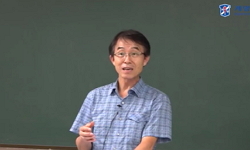Norovirus is one of the major causes of non-bacterial gastroenteritisin humans. The aim of this study was to analyzethe amino acid variation of open reading frame 2 of GII.4variants in South Korea during the period from November2006 to December 2012. ...
http://chineseinput.net/에서 pinyin(병음)방식으로 중국어를 변환할 수 있습니다.
변환된 중국어를 복사하여 사용하시면 됩니다.
- 中文 을 입력하시려면 zhongwen을 입력하시고 space를누르시면됩니다.
- 北京 을 입력하시려면 beijing을 입력하시고 space를 누르시면 됩니다.
https://www.riss.kr/link?id=A103766755
- 저자
- 발행기관
- 학술지명
- 권호사항
-
발행연도
2014
-
작성언어
English
- 주제어
-
등재정보
KCI등재,SCIE,SCOPUS
-
자료형태
학술저널
-
수록면
427-434(8쪽)
-
KCI 피인용횟수
5
- DOI식별코드
- 제공처
- 소장기관
-
0
상세조회 -
0
다운로드
부가정보
다국어 초록 (Multilingual Abstract)
Norovirus is one of the major causes of non-bacterial gastroenteritisin humans. The aim of this study was to analyzethe amino acid variation of open reading frame 2 of GII.4variants in South Korea during the period from November2006 to December 2012. Sixty-nine complete nucleotide sequencesof open reading frame 2 were obtained from 113GII.4 strains. The GII.4 2006b variants were detected predominantlybetween 2006 and 2009; however, new GII.4variants, which were termed the 2010 variant and the 2012variant, emerged in 2010 and 2012, respectively. The numberof GII.4 2006b variants steadily decreased until 2012,whereas the number of gastroenteritis cases caused by thenew variants increased between 2010 and 2012. The aminoacid sequence in the ORF2 region obtained in this studywas compared with other GII.4 variants isolated in variouscountries. Amino acid variations were observed primarilyat epitope sites and the surrounding regions. Amino acids294, 359, 393, and 413 of the P2 subdomain were the mostvariable sites among the GII.4 variants. The information inthis study can be useful in basic research to predict theemergence and determine the genetic functions of newGII.4 variants.
참고문헌 (Reference)
1 정아용, "인체 노로바이러스의 한국분리주 Hu/NLV/Gunpo/2006/KO의 분자생물학적 특성" 한국미생물학회 45 (45): 105-111, 2009
2 Donaldson, F. E., "Viral shape-shifting: norovirus evasion of the human immune system" 8 : 231-241, 2010
3 Huh, J. W., "Viral etiology and incidence associated with acute gastroenteritis in a 5-year survey in Gyeonggi province, South Korea" 44 : 152-156, 2008
4 Park, K. S., "Updates on the genetic variations of Norovirus in sporadic gastroenteritis in Chungnam Korea, 2009-2010" 9 : 29-, 2012
5 Lam, T. Y. T., "The recombinant origin of emerging human norovirus GII.4/2008: intra-genotypic exchange of the capsid P2 domain" 93 : 817-822, 2012
6 Saitou, N., "The neighbor-joining method: a new method for reconstructing phylogenetic trees" 4 : 406-425, 1987
7 Tan, M., "The P domain of norovirus capsid protein forms a subviral particle that bind to histo-blood group antigen receptor" 79 : 14017-14030, 2005
8 Shanker, S., "Structural analysis of histo-blood antigen biding specificity in a norovirus GII.4 epidemic variant:Implications for epochal evolution" 85 : 8635-8645, 2011
9 Eden, J. S., "Recombination within the pandemic norovirus GII.4 lineage" 87 : 6270-6282, 2013
10 Bill, A. R., "Rapid evolution of pandemic noroviruses of the GII.4 linage" 6 : e1000831-, 2010
1 정아용, "인체 노로바이러스의 한국분리주 Hu/NLV/Gunpo/2006/KO의 분자생물학적 특성" 한국미생물학회 45 (45): 105-111, 2009
2 Donaldson, F. E., "Viral shape-shifting: norovirus evasion of the human immune system" 8 : 231-241, 2010
3 Huh, J. W., "Viral etiology and incidence associated with acute gastroenteritis in a 5-year survey in Gyeonggi province, South Korea" 44 : 152-156, 2008
4 Park, K. S., "Updates on the genetic variations of Norovirus in sporadic gastroenteritis in Chungnam Korea, 2009-2010" 9 : 29-, 2012
5 Lam, T. Y. T., "The recombinant origin of emerging human norovirus GII.4/2008: intra-genotypic exchange of the capsid P2 domain" 93 : 817-822, 2012
6 Saitou, N., "The neighbor-joining method: a new method for reconstructing phylogenetic trees" 4 : 406-425, 1987
7 Tan, M., "The P domain of norovirus capsid protein forms a subviral particle that bind to histo-blood group antigen receptor" 79 : 14017-14030, 2005
8 Shanker, S., "Structural analysis of histo-blood antigen biding specificity in a norovirus GII.4 epidemic variant:Implications for epochal evolution" 85 : 8635-8645, 2011
9 Eden, J. S., "Recombination within the pandemic norovirus GII.4 lineage" 87 : 6270-6282, 2013
10 Bill, A. R., "Rapid evolution of pandemic noroviruses of the GII.4 linage" 6 : e1000831-, 2010
11 Vega, E., "Novel surveillance network for norovirus gastroenteritis outbreaks, United States" 17 : 1989-1395, 2011
12 Mathijs, E., "Novel norovirus recombinants and GII.4 sub-lineages associated with outbreaks between 2006 and 2010 in Belgium" 8 : 310-, 2011
13 Siebenga, J. J., "Norovirus illness is a global problem: Emergence and spread of norovirus GII.4 variants, 2001–2007" 200 : 802-812, 2009
14 Zheng, D. P., "Norovirus classification and proposed strain nomenclature" 346 : 312-323, 2006
15 Zakikhany, K., "Molecular evolution of GII-4 norovirus strain" 7 : e41625-, 2012
16 Zheng, D. P., "Molecular epidemiology of genogroup II-genotype 4 norovirus in the United States between 1994 and 2006" 48 : 168-177, 2010
17 Lindesmith, C. L., "Mechanisms of GII.4 norovirus persistence in human population" 5 : 269-290, 2008
18 Bull, A.R., "Mechanisms of GII.4 norovirus evolution" 19 : 233-240, 2011
19 Pang, L. X., "Influence of novel norovirus GII.4 variants on gastroenteritis outbreak dynamics in Alberta and the Northern Territories, Canada between 2000 and 2008" 5 : e11599-, 2008
20 van Beek, J., "Indications for worldwide increased norovirus activity associated with emergence of a new variant of genotype II.4, late 2012" 18 : 8-9, 2013
21 Lindesmith, C. L., "Imminogenetic mechanisms driving norovirus GII.4 antigenic variation" 8 : e1002705-, 2012
22 Motomura, K., "Identification of monomorphic and divergent haplotypes in the 2006-2007 norovirus GII/4 epidemic population by genomewide tracing evolutionary history" 82 : 11247-11262, 2008
23 Ando, T., "Genetic classification of “Norwalk-like Virus”" 181 : S336-S348, 2000
24 Le, V. P., "Genetic characterization of norovirus GII.4 2006b variants from Jeju island, South Korea" 82 : 1665-1070, 2010
25 Park, K. S., "Genetic analysis of norovirus GII.4 variants circulating in Korea in 2008" 155 : 635-641, 2010
26 Park, J. W., "Full sequence analysis and characterization of the South Korean Norovirus GII-4 variant CUK-3" 8 : 167-, 2011
27 Belliot, G., "Evidence of emergence of new GGII.4 norovirus variants from gastroenteritis outbreak survey in France during the 2007-to-2008 and 2008-to-2009 winter season" 48 : 994-998, 2010
28 Martella, V., "Evidence for recomvination berween pandemic GII.4 norovirus strains New Orleans 2009 and Sydney 2012" 51 : 3855-3857, 2013
29 Siebenga, J. J., "Epochal evolution of GGII.4 norovirus capsid proteins from 1995 to 2006" 81 : 9932-9941, 2007
30 Nataraju, S. M., "Emergence of novel norovirus recombinants with NVGII.1/NVGII.5 RdRp gene and NVGII.13 capsid gene among children and adults in Kolkata, India" 2 : 130-137, 2011
31 Han, T. H., "Emergence of norovirus GII-4/2008 variant and recombinant strains in Seoul, Korea" 156 : 323-329, 2011
32 Lindesmith, C. L., "Emergence of a norovirus GII.4 strain correlates with changes in evolving blockade epitopes" 87 : 2803-2813, 2013
33 Haslng, E. M., "Emergence of a new norovirus GII.4 variant and changes in the historical biennial pattern of norovirus outbreak activity in Alberta, Canada, from 2008 to 2013" 51 : 2204-2211, 2013
34 Mahar, J.E., "Characterization of norovirus strains in Australian children from 2006 to 2008: prevalence of recombinant strains" 83 : 2213-2219, 2011
동일학술지(권/호) 다른 논문
-
- 한국미생물학회
- 임종규
- 2014
- KCI등재,SCIE,SCOPUS
-
- 한국미생물학회
- Zijun Xiao
- 2014
- KCI등재,SCIE,SCOPUS
-
Dyella jejuensis sp. nov., Isolated from Soil of Hallasan Mountain in Jeju Island
- 한국미생물학회
- 김민수
- 2014
- KCI등재,SCIE,SCOPUS
-
- 한국미생물학회
- Manal M. Housseiny
- 2014
- KCI등재,SCIE,SCOPUS
분석정보
인용정보 인용지수 설명보기
학술지 이력
| 연월일 | 이력구분 | 이력상세 | 등재구분 |
|---|---|---|---|
| 2023 | 평가예정 | 해외DB학술지평가 신청대상 (해외등재 학술지 평가) | |
| 2020-01-01 | 평가 | 등재학술지 유지 (해외등재 학술지 평가) |  |
| 2013-12-02 | 학술지명변경 | 외국어명 : The Journal of Microbiology -> Journal of Microbiology |  |
| 2010-01-01 | 평가 | 등재학술지 유지 (등재유지) |  |
| 2008-01-01 | 평가 | 등재학술지 유지 (등재유지) |  |
| 2006-01-01 | 평가 | 등재학술지 유지 (등재유지) |  |
| 2004-01-01 | 평가 | 등재학술지 유지 (등재유지) |  |
| 2001-07-01 | 평가 | 등재학술지 선정 (등재후보2차) |  |
| 1999-01-01 | 평가 | 등재후보학술지 선정 (신규평가) |  |
학술지 인용정보
| 기준연도 | WOS-KCI 통합IF(2년) | KCIF(2년) | KCIF(3년) |
|---|---|---|---|
| 2016 | 1.76 | 0.2 | 1.22 |
| KCIF(4년) | KCIF(5년) | 중심성지수(3년) | 즉시성지수 |
| 0.91 | 0.73 | 0.399 | 0.07 |






 KCI
KCI




